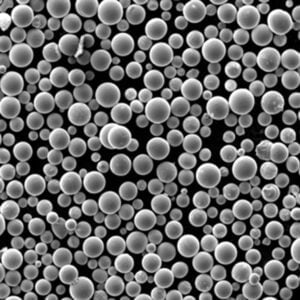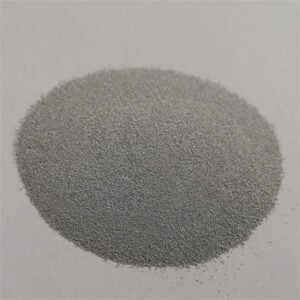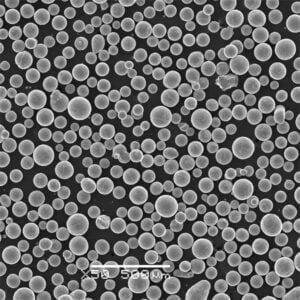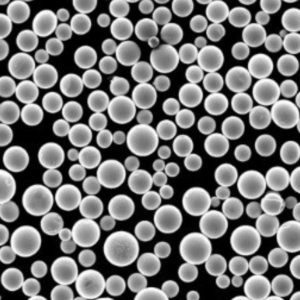적층 가공 알루미늄
목차
알루미늄은 높은 중량 대비 강도, 우수한 내식성, 열적 특성 및 기계적 성능으로 인해 적층 제조에 널리 사용되는 금속 소재입니다. As 적층 가공 알루미늄 품질과 프린터 기능이 발전함에 따라 항공우주, 자동차, 소비재 및 건축 분야의 새로운 고부가가치 애플리케이션에서 복잡한 알루미늄 부품 생산의 이점을 누릴 수 있습니다.
이 개요에서는 레이저 분말 베드 용융(PBF-LB) 및 직접 에너지 증착(DED)과 같은 AM 공정에 사용되는 일반적인 알루미늄 합금의 장점과 해당 특성, 후처리 절차, 응용 분야 및 주요 공급업체에 대해 설명합니다. 비교 표는 다양한 알루미늄 소재와 적층 제조 방법 간의 장단점을 강조합니다.

적층 제조 알루미늄 개요
알루미늄이 AM 애플리케이션에 제공하는 주요 이점
- 경량 - 낮은 밀도로 인쇄 부품 무게 감소
- 고강도 - 많은 알루미늄 합금의 항복 강도가 500MPa를 초과합니다.
- 우수한 내식성 - 보호 산화물 외부 레이어
- 높은 열 전도성 - 방열 잠재력
- 우수한 고온 특성 - 최대 300~400°C
- 전기 전도성 - 전자 애플리케이션에 유용합니다.
- 저렴한 비용 - 티타늄 또는 니켈 합금보다 저렴합니다.
- 재활용성 - 파우더를 재사용할 수 있어 자재 비용 절감
적층 가공의 설계 자유도와 결합된 알루미늄은 산업 전반에 걸쳐 더 가볍고 성능이 우수한 부품을 가능하게 합니다. 알루미늄 분말 생산의 개선으로 주조 및 단조 야금에 필적하는 고밀도 부품을 제작할 수 있는 역량이 확장되었습니다.
AM용 알루미늄 합금 분말 재료
적층 제조에 최적화된 알루미늄 합금은 제어된 파우더 입자 생산과 지능형 합금 첨가제를 결합하여 특성을 향상시킵니다.
일반적인 알루미늄 AM 합금 구성
| 합금 | Si% | Fe% | Cu% | Mn% | Mg% | 기타 |
|---|---|---|---|---|---|---|
| AlSi10Mg | 9-11 | <1 | <0.5 | <0.45 | 0.2-0.45 | – |
| AlSi7Mg0.6 | 6-8 | <1 | <0.5 | <0.45 | 0.55-0.6 | – |
| 스칼말로이® | 4-6 | 0.1-0.3 | <0.1 | <0.1 | 0.4-0.7 | Zr Sc |
| C35A | 3-5 | 0.6 | 3.0-4.0 | 0.2-0.7 | 0.25-0.8 | – |
| A20X | 3-5 | 0.6 | 3.5-4.5 | 0.2-0.8 | 0.05-0.5 | – |
실리콘은 일반적인 강화제입니다. Fe, Cu, Mg와 같은 미량 원소는 특성을 최적화합니다. 스칼말로이®와 같은 독특한 합금은 스칸듐-지르코늄 침전물 나노 입자를 사용하여 단조 합금을 능가하는 초고강도를 달성합니다.
알루미늄 AM 합금의 주요 특성
| 합금 | 인장 강도 | 밀도 | 레이어 침투 깊이 |
|---|---|---|---|
| AlSi10Mg | 400-440 MPa | 2.67g/cc | 70-100 μm |
| AlSi7Mg0.6 | 420-500 MPa | 2.66g/cc | 60-80 μm |
| 스칼말로이® | 550MPa 이상 | 2.68g/cc | 50-70 μm |
강도가 높을수록 재용융 주기가 필요하기 전에 달성할 수 있는 단일 레이어 깊이가 제한됩니다.
사양 적층 가공 알루미늄
유동성, 입자 모양, 화학적 순도와 같은 중요한 분말 특성은 알루미늄 AM 가공 품질을 결정합니다.
알루미늄 분말의 크기 분포 표준
| 측정 | 일반 사양 |
|---|---|
| 크기 범위 | 15 - 45 μm |
| 파티클 모양 | 대부분 구형 |
| 중간 크기(D50) | 25-35 μm |
입자 크기 분포, 형태 및 오염 수준을 엄격하게 제어하여 결함 없는 조밀하게 인쇄된 부품을 보장합니다.
알루미늄 인쇄 분말의 화학 표준
| 요소 | 구성 제한 |
|---|---|
| 산소(O2) | 최대 0.15% |
| 질소(N2) | 최대 0.25% |
| 수소(H2) | 최대 0.05% |
기체 불순물에 대한 제한으로 인쇄된 알루미늄 부품의 광범위한 다공성 또는 내부 공극을 방지합니다.
다음에 대한 사후 처리 절차 적층 가공 알루미늄
적층 제조 알루미늄 부품의 일반적인 후처리 방법은 다음과 같습니다:
알루미늄 AM 후처리 기술
열처리
T6 열처리 - 용액 가열 및 노화 사이클을 통해 강도, 경도 및 연성을 개선합니다. 많은 Al 합금에서 최고의 기계적 성능을 발휘하는 데 필수적입니다.
표면 마감
외부 표면을 가공, 비드 블라스팅 또는 연마하면 치수의 정확성과 매끄러운 표면 마감을 얻을 수 있습니다. 아노다이징은 알루미늄 표면에 색을 입히고 보호할 수 있습니다.
HIP(열간 등방성 프레싱)
고온 + 고압으로 내부 공극과 다공성을 최소화합니다. 누출이 중요한 애플리케이션에 유용하지만 공정 단계가 추가됩니다.
가공
정밀 베어링 표면이나 나사산과 같은 기능을 그물 모양 AM 부품에 CNC 가공합니다. 기존 제조 방식에 비해 최대 60%의 가공 시간을 단축할 수 있습니다.
알루미늄용 적층 제조 기술
최신 금속 3D 프린터는 선택적 레이저 용융, 전자 빔 또는 바인더 제팅을 활용하여 기존 방식으로는 얻을 수 없는 복잡한 알루미늄 부품을 제작할 수 있습니다.
알루미늄 적층 제조 공정 비교
| 방법 | 설명 | 혜택 | 제한 사항 |
|---|---|---|---|
| 파우더 베드 퓨전 - 레이저 | 레이저로 금속 분말 층의 영역을 선택적으로 융합합니다. | 우수한 정확도, 재료 특성 및 표면 마감 | 상대적으로 느린 빌드 속도 |
| 파우더 베드 융합 - 전자빔 | 고진공에서 전자빔 용융 | 뛰어난 일관성, 고밀도 | 제한된 재료 옵션, 높은 장비 비용 |
| 직접 에너지 증착 | 집중된 열원이 금속 분말 스프레이를 녹입니다. | 대형 부품, 수리 | 표면 마감 불량, 지오메트리 제약 조건 |
| 바인더 분사 | 분말 입자를 결합하기 위해 분사되는 바인더 | 매우 빠른 빌드 속도, 낮은 장비 비용 | 기계적 성능 약화, 2차 소결 필요 |
레이저 기반 파우더 베드 접근 방식은 오늘날 대부분의 기능성 알루미늄 부품에 최고의 기능을 제공합니다.
알루미늄 AM 부품 응용 분야
가볍고 강도가 높으며 열적 특성이 뛰어난 알루미늄 AM은 다음과 같은 요구 사항에 적합합니다:
적층 가공 알루미늄 부품을 사용하는 산업
항공우주 - 브래킷, 보강재, 열교환기, UAV 구성품
자동차 - 맞춤형 브래킷, 파워트레인, 섀시 및 구동계 시스템
산업 - 경량 로봇 공학 및 툴링, 프로토타이핑
아키텍처 - 장식, 맞춤형 메탈릭 아트
소비자 - 전자 제품, 맞춤형 제품
알루미늄 AM은 복잡한 미션 크리티컬 애플리케이션에 적합한 새로운 설계 가능성을 열어줍니다.
알루미늄 인쇄 분말 공급업체
적층 제조 공정에 특별히 최적화된 고순도 알루미늄 합금 분말은 주요 금속 재료 공급업체에서 제공합니다:
선도적인 알루미늄 분말 회사
| 회사 | 일반적인 합금 등급 | 일반 가격/Kg |
|---|---|---|
| AP&C | A20X, A205, 맞춤형 합금 | $55 – $155 |
| 샌드빅 오스프리 | AlSi10Mg, AlSi7Mg0.6, Scalmalloy® | $45 – $220 |
| LPW 기술 | AlSi10Mg, Scalmalloy® | $85 – $250 |
| 프렉스에어 | AlSi10Mg, AlSi7Mg0.6 | $50 – $120 |
가격은 합금 선택, 파우더 크기 사양, 로트 수량 및 필요한 인증에 따라 달라집니다.
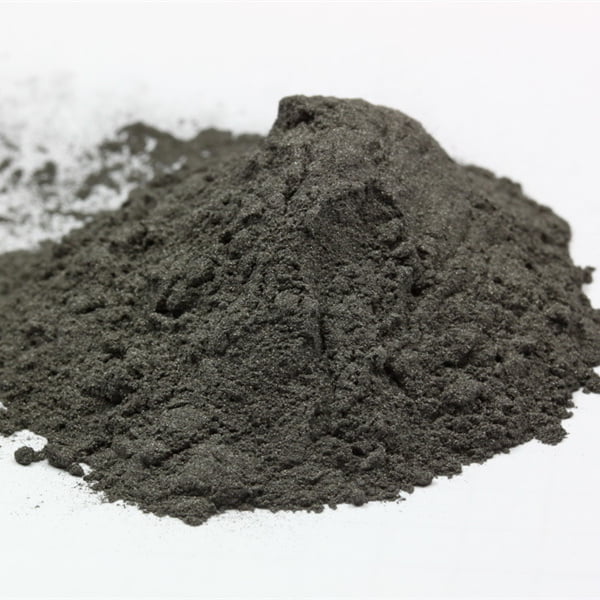
자주 묻는 질문
레이저 파우더 베드 용융 AM에 가장 적합한 알루미늄 합금은 무엇인가요?
알루미늄 합금의 레이저 파우더 베드 3D 프린팅을 사용하는 대부분의 응용 분야에 가장 적합한 인쇄성, 기계적 특성 및 내식성을 제공하는 AlSi10Mg.
알루미늄 AM 파우더에 권장되는 입자 크기 분포는 무엇인가요?
평균 크기가 25~35μm인 가우시안 곡선은 대부분의 일반적인 레이저 파우더 베드 융합 기계에서 최적의 파우더 베드 밀도와 균일한 용융 거동을 제공합니다.
스칼말로이를 고급 알루미늄 합금으로 간주하는 이유는 무엇인가요?
스칼말로이는 기존 알루미늄 야금으로는 얻을 수 없는 새로운 스칸듐 함유 성분을 통해 적절한 연신율과 파괴 인성을 유지하면서 균일한 침전 강화 구조를 활용하여 타의 추종을 불허하는 강도를 제공합니다.
알루미늄으로 적층 제조 후 열처리를 사용해야 하나요?
예, 열처리는 많은 알루미늄 AM 합금의 미세 구조를 개선하고 기계적 특성을 향상시킵니다. 일반적인 T6 처리에는 용액 가열 후 인위적인 노화를 통해 침전 강화 현상으로 인한 상당한 물성 개선이 포함됩니다.
AM 알루미늄 부품으로 어떤 표면 마감이 가능합니까?
일부 가공, 연삭, 샌딩 및/또는 연마 작업을 거친 후 사용된 적층 제조 공정에 따라 적층 제조 알루미늄 부품의 표면 거칠기(Ra) 값을 10μm 미만으로 얻을 수 있습니다. 보다 집중적인 마감 처리를 통해 광학 등급의 거울 표면을 제공할 수 있습니다. 일반적인 마감 처리에는 부식 또는 마모 특성을 향상시키기 위한 아노다이징과 컬러링 옵션이 포함됩니다.
공유
중국 칭다오에 본사를 둔 선도적인 적층 제조 솔루션 제공업체인 MET3DP Technology Co. 당사는 산업용 3D 프린팅 장비와 고성능 금속 분말을 전문으로 합니다.
관련 기사
Met3DP 소개
최근 업데이트
제품

3D 프린팅 및 적층 제조용 금속 분말
문의 정보
- 칭다오시, 산둥성, 중국
- [email protected]
- [email protected]
- +86 19116340731






